Plastic Recycling
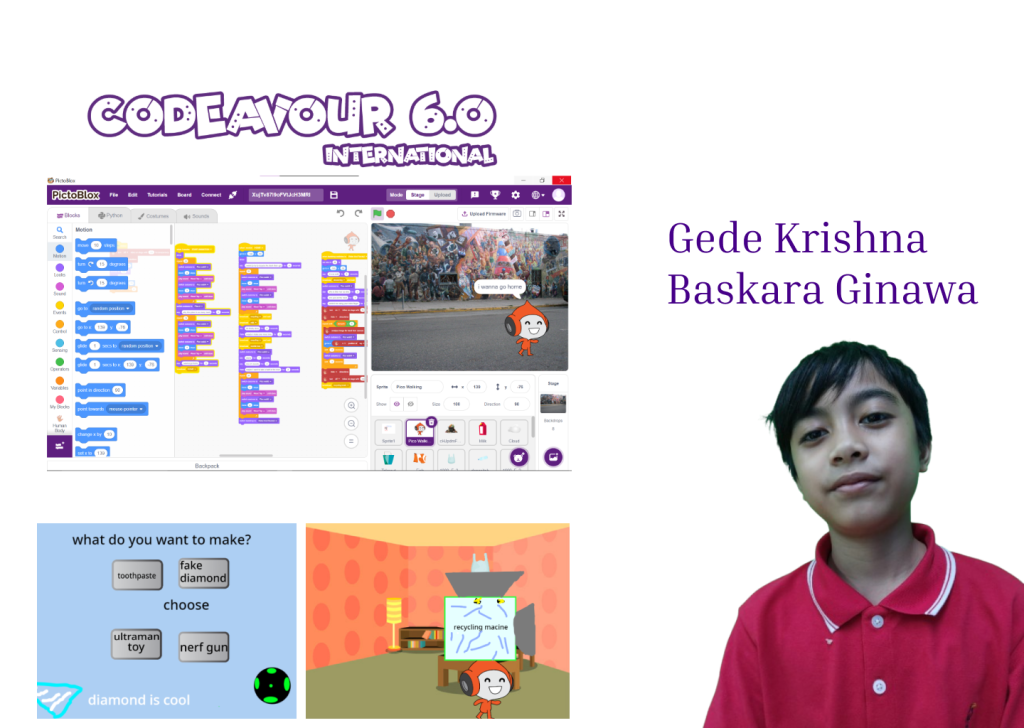
In this world, there is an abundance of scattered trash, and no recycling machines exist that can immediately transform waste into usable products.
In the project I created, there is a character named Pico who lives in a polluted environment. One day, while walking through his surroundings, Pico notices many piles of garbage around him. Without hesitation, he starts cleaning up the trash. After completing the cleanup, he feels tired and decides to head home. When he arrives, he realizes he has brought some of the trash he collected along the way. Determined to make use of it, Pico decides to recycle the waste. From this effort, he manages to create two items.
The process leaves him sweaty and exhausted, so he decides to bathe in a nearby river. However, as he steps into the river, he is shocked to see that the water is heavily polluted. After finishing his bath, Pico takes it upon himself to clean the trash in the river as well. On his way back home, he collects some of the trash he found there. This time, rather than manually recycling it, he uses a machine he invented to process the waste more efficiently.
With his task completed, Pico’s story ends, leaving a message of environmental responsibility and innovation
Clean The City
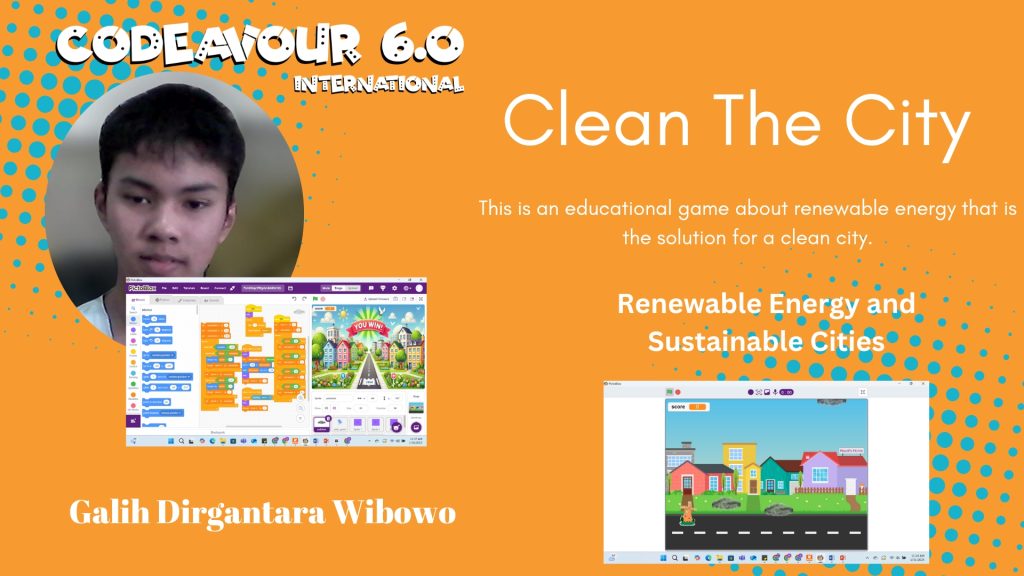
“Clean the City” is an interactive and educational game designed to promote awareness about the importance of renewable energy in keeping urban environments clean. Developed for the Codeavour 6.0 competition, this game highlights the role of wind power in reducing air pollution and fostering environmental sustainability.
In this game, players control a wind turbine that shoots bursts of wind to eliminate pollution. Each successful hit on a pollution cloud increases the score by one, emphasizing the positive impact of renewable energy. However, if a pollution cloud is missed, the score decreases by one, representing the consequences of failing to address pollution. Players win the game upon reaching 50 points, symbolizing a fully cleaned city. If the score drops below zero, the game ends, reinforcing the dangers of excessive pollution.
By combining engaging gameplay with an intuitive scoring system, “Clean the City” educates players on the benefits of transitioning from fossil fuels to cleaner energy sources. The game makes environmental responsibility fun and interactive, encouraging young players to take an active role in sustainability.
With its creative approach to environmental education, “Clean the City” ensures that awareness about renewable energy and pollution control reaches a wider audience. This game is not just entertainment-it is a meaningful step toward inspiring a cleaner, greener future.
Rosy the Rabbit
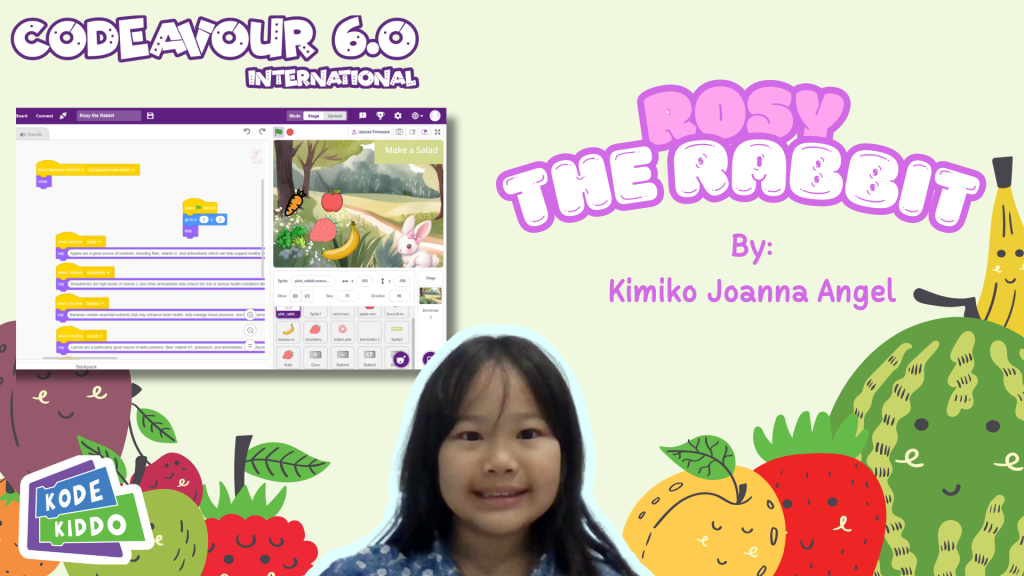
Rosy the Rabbit is a fun game made by Kimiko to help kids learn about healthy food. In the game, Rosy, a friendly rabbit, teaches children why eating vegetables and fruits is good for their health. Many kids don’t like healthy food, so this game makes learning fun and exciting. One of the best parts of the game is the salad-making activity, where players can mix different healthy ingredients to create their own meals. This helps kids understand how to make good food choices in a fun way. Kimiko made sure the game is easy to understand, with colorful pictures, fun animations, and simple explanations. Unlike other apps, Rosy the Rabbit lets kids play, explore, and interact while learnin
Toby and the 100 Trash
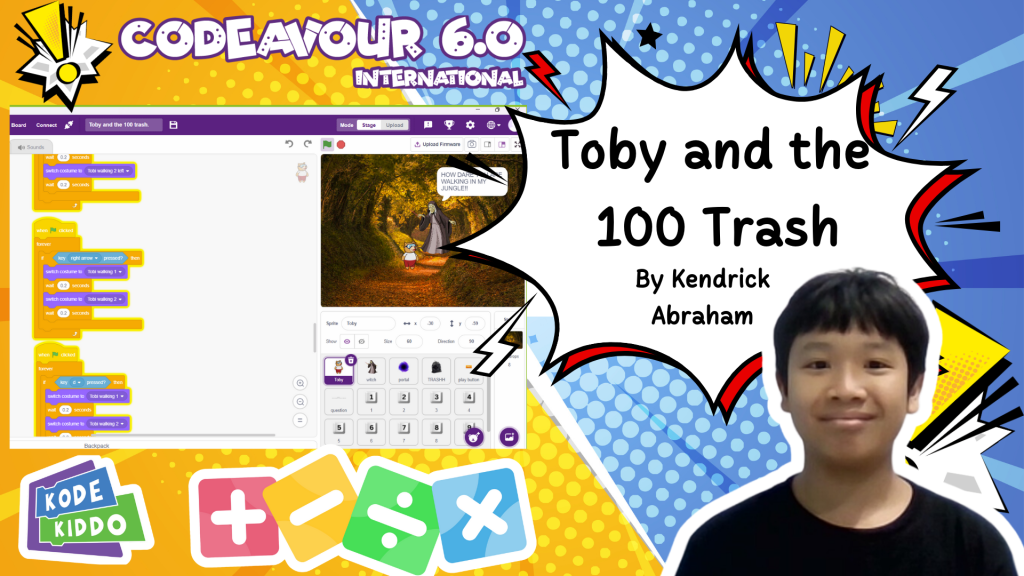
Toby and 100 Trash is a fun and exciting math game that makes learning enjoyable for kids. The game follows Toby, a boy who is on his way home when he meets a witch. The witch casts a spell and teleports him to a strange place. To return home, Toby must solve math questions and collect 100 pieces of trash along the way. Every time players answer a math question correctly, Toby picks up trash and moves forward in his adventure. If they get a question wrong, they can try again and learn from their mistakes. This way, kids can improve their math skills while having fun at the same time. Many children find math boring or too difficult, which is why this game was created. Instead of just solving problems on paper, kids can enjoy an interactive adventure where learning happens in a fun way. Toby and 100 Trash turns math into an exciting challenge, where players feel like they are part of the story. The game also teaches responsibility by encouraging players to clean up trash while solving math problems. Unlike other math-learning apps, this game combines adventure, problem-solving, and learning in a unique way. Players don’t just answer questions, they help Toby on his journey and experience a fun story while improving their math skills. Toby and 100 Trash makes math less scary and more exciting, helping kids gain confidence and enjoy learnin
re:forest
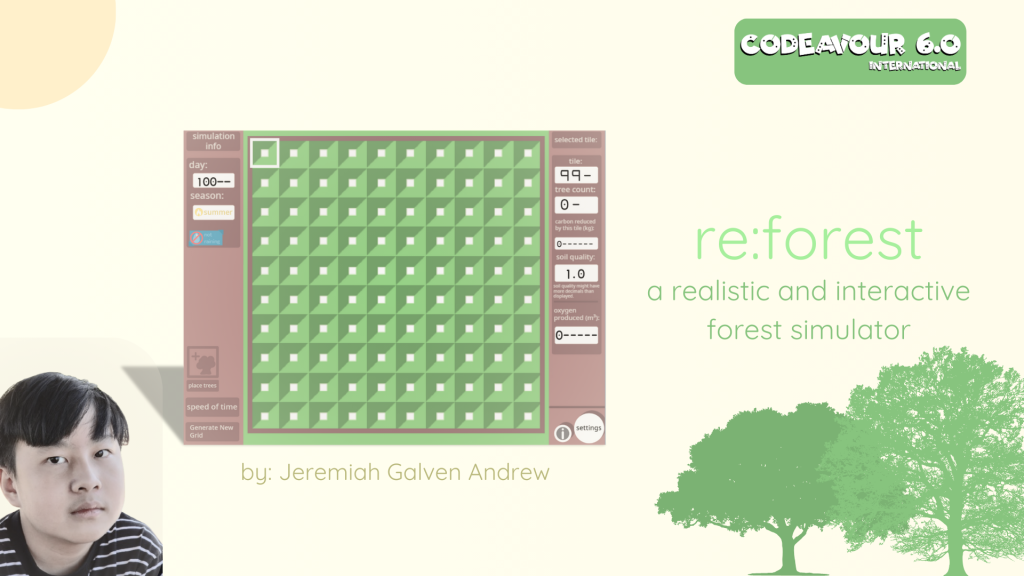
re:forest is an interactive and user-friendly forest simulator that demonstrates tree growth and its significance realistically. Users can see how different factors affect tree growth, such as, rain, soil quality, seasons, and even soil moisture. Users can also simulate different scenarios by toggling seasons, rain, and adjusting rain frequency.
The primary goal of re:forest is to raise awareness about rising CO2 emissions and emphasize the importance of trees in resolving this problem. Not only is it aimed at raising awareness, but could also be used as an educational program to help learners understand the impact of factors in tree growth.
Through its dynamic grid system, users can realistically simulate the long-term effects of environmental factors on tree growth and impacts in CO2 emissions. re:forest also offers numerous detailed explanations on the growth of trees in the built-in guide, further enhancing the user’s experience and understanding of environmental science. Through re:forest’s user-fdly interface and settings, users will feel more comfortable using the program and simulate a scenario in their own will.
By engaging users in meaningful and interactive simulations, re:forest promotes a deeper understanding of climate action and encourages users to reflect on the importance of responsible consumption and environmental preservation.
ECO SNIPER
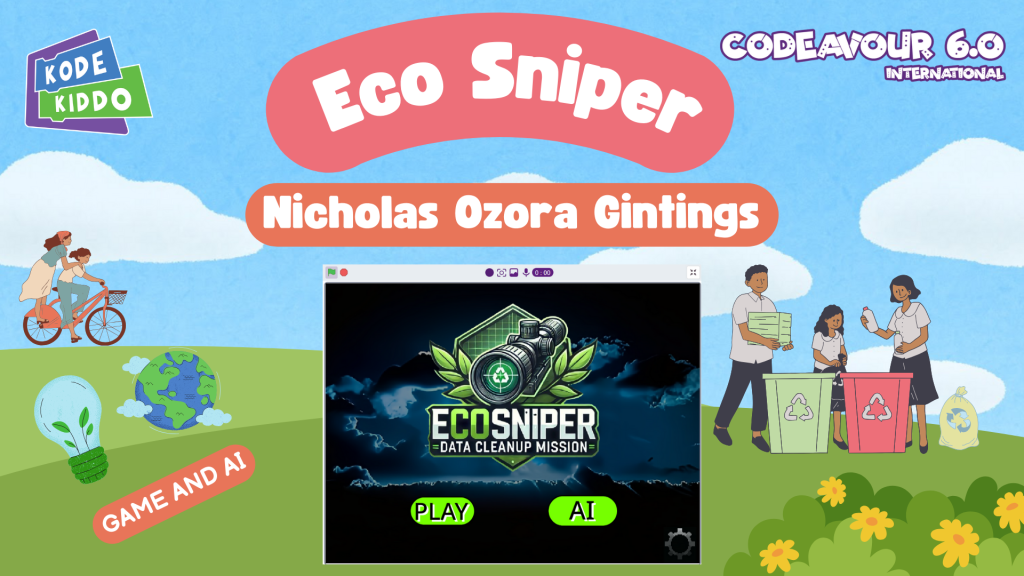
Eco Sniper is an exciting and educational action game that combines the thrill of shooting mechanics with valuable lessons in waste management and environmental conservation. Players take on the role of a “Waste Warrior”, a heroic guardian tasked with combating the overwhelming waste crisis and restoring balance to the planet. Through engaging gameplay, players are challenged to clean up trash by shooting at it while learning about different waste types and their environmental impact.
The game features AI-powered waste analysis, allowing players to classify and manage waste more effectively. By incorporating Artificial Intelligence (AI), Eco Sniper provides an interactive learning experience where players can distinguish between recyclable, biodegradable, and hazardous waste. This not only enhances the game’s realism but also educates players on proper waste disposal methods.
A key highlight of Eco Sniper is its interactive storytelling, which immerses players in a world threatened by pollution. Through dynamic missions and narrative-driven gameplay, players encounter various environmental challenges and must make strategic decisions to solve them.
With its unique combination of action, AI-driven education, and immersi storytelling, Eco Sniper is more than just a game—it is a call to action. By playing, users not only enjoy an exhilarating adventure but also develop a deeper understanding of environmental issues and the importance of waste management. Through fun and interactive gameplay, Eco Sniper inspires players to become real-life Waste Warriors, contributing to a cleaner and greener world
Fighting and Running Trash
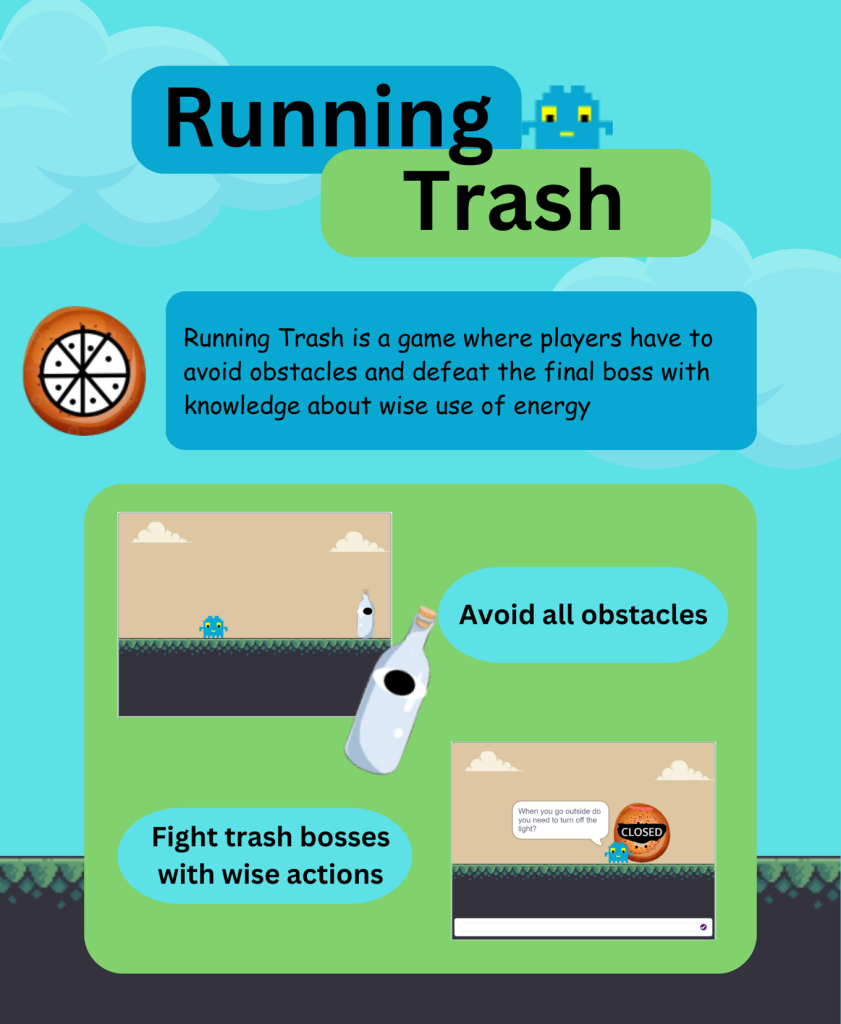
“Fighting and Running Trash” is a fun and exciting game created by an elementary student who wanted to mix running with fighting trash bosses. The game’s idea is simple yet challenging: you have to run and avoid obstacles, like rocks or walls, while staying on track. As you run through the levels, you come acros”trash bosses,” which are bad guys made of trash. These bosses can only be defeated by using the right actions, like jumping, dodging, or attacking at the right time.
The game teaches quick reflexes because players have to act fast to avoid obstacles and fight bosses. Each level is different, with new and tricky challenges, which make it even more fun. The trash bosses get harder to beat as you move forward, so you need to figure out the best way to fight them. You might need to jump over them or use special powers to defeat them, depending on what kind of trash boss you’re facing.
This game was made by a student who loves games and wanted to make something cool. It’s not just about running, but also about using your brain to plan out the best moves. It’s an awesome mix of speed, action, and strategy, making it a great game for anyone who likes a good chal
The Rain Of Acid

Welcome to rain of acid In this game, you’ll take on the role of a neighborhood watchman tasked with cleaning up the sea.
garbage in the sea. You’ll be equipped with a ship that can automatically sort organic and inorganic waste. Collect as much trash as you can and earn score. This game is not only fun, but also educational. You’ll learn about the importance of keeping the environment clean, how to properly sort waste, and the harmful effects of waste on nature. clean pceanis perfect for kids and families to play. Come on, join the fun and become a cleanup hero!
SAVE THE ECOSYSTEMS
SAVE THE ECOSYSTEMS is a game for kids. It’s teaching them to save the ecosystems by drag the trashes to the trash can and save the fish. Also, there is a tutorial (or instructions) to how to play the game. So, they won’t feel confused to play the game. But I can’t guarantee if there is some bug on the game, so just be careful. SAVE THE ECOSYSTEMS have the nice graphics and music that maded by myself. The graphics are look colourful, so it’s suitable for kids.
There are 2 stages on the game. Stage 1 is placed on the park, stage 2 placed in the sea. On the stage 1, the player have to drag the trashes to the can trash can using keyboard. It’s only using right arrow and left arrow keyboard, but the dificulty is the player must quick drag the trashes to the right trash can before touched the gray line and gain 10 score to go to the next stage. On the stage 2, the player have to save the fish by clicking them. It’s pretty easy because so many fish that will appear on the game, so the player can d fish with easy and the player will win the game.
Alright, that’s all about SAVE THE ECOSYSTEMS game. If you want to comment about the game, please give me criticism and suggetions. That’ll helping me to develop and fix the game. That’s all. Thanks for the atten
Little Witch
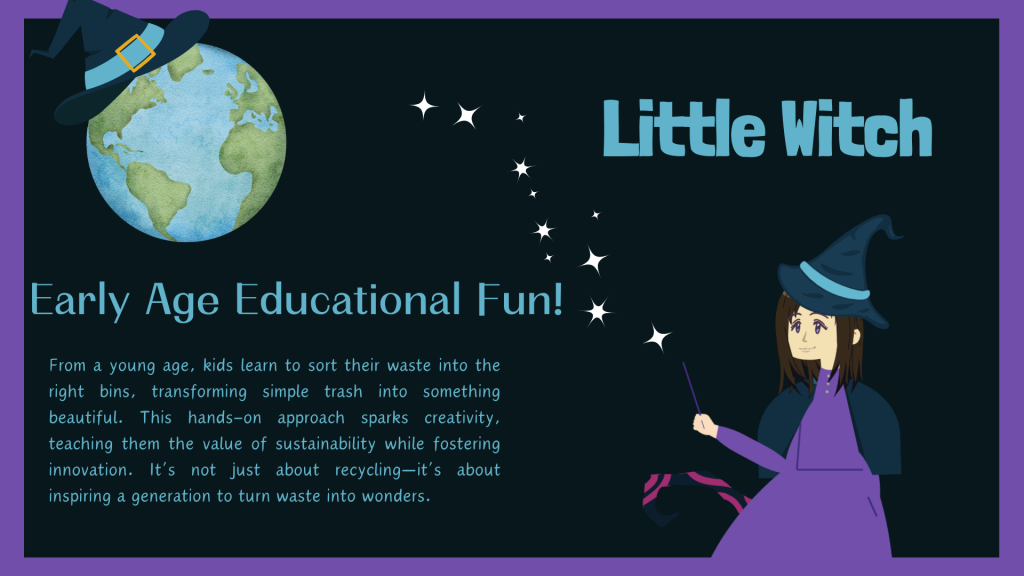
Here in, the kids embark on a fantastic journey of learning how to recycle from their tender years, sorting the garbage into appropriate bins, thereby changing simple trash into something wonderful and useful. It is not about discarding waste but more about envisioning possibilities with things that had seemed like waste earlier. In every new challenge, kids are given more freedom to be creative with recyclable materials in building, crafting, and making an impressive design. Practical experience provokes their imagination, pushing them beyond the ordinary to visualize what everyday items could be transformed into. But this game goes beyond creativity-it instills a deep understanding of sustainability. As kids work with recyclables, they learn how every action counts in protecting the environment. They begin to appreciate the value of reusing, reducing, and recycling, developing a sense of responsibility toward the planet. It’s not about following the rules but about developing a mindset that finds diamonds even in the dust. Playful learning is not only enjoyable but also life-changing. Children turn waste into wonders and realize that they too can have a positive effect. In playing the game, kids not only learn about a world of sustainability but become inspired to innovate, create, and lead the charge toward a cleaner, more sustainable future. It’s not just about recycling; it’s about empowering the next generation of problem solvers and eco-conscious innovators.
